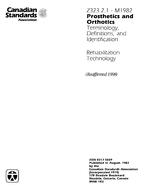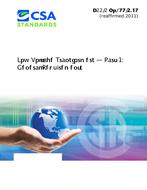Preface
This is the first edition of CSA C22.2 No. 269.3, Surge protective devices Type 3 – Cord connected, direct plug-in and receptacle type. This Standard is one in a series of standards dealing with surge protective devices. Upon publication of the entire series, the requirements in these standards will supersede CSA TIL I-11B on surge protection. This Standard is issued by the CSA Group under Part II of the Canadian Electrical Code. For general information on the Standards of the Canadian Electrical Code, Part II, see the Preface of CAN/CSA-C22.2 No. 0.
Scope
1.1 This Standard covers cord connected, direct plug-in and receptacle type SPDs whose primary function is to provide surge protection and that are intended to be marked SPD Type 3 in accordance with Clause 5.2(a). This product may also be used for power distribution circuits. 1.2 This Standard applies to SPDs intended for use on 50 or 60 Hz power circuits over 42 V and not exceeding 600 V. 1.3 Cord connected, direct plug-in, and receptacle type SPDs intended for use within 10 m of conductor distance from the main disconnect are also tested to the requirements of CSA C22.2 No. 269.2. 1.4 This Standard does not cover cord connected power bars with surge suppression capability built to CSA C22.2 No. 21 whose primary function is not to provide surge protection. 1.5 This Standard does not cover receptacles or current taps with surge protection capability built to CSA C22.2 No. 42 whose primary function is not to provide surge protection. 1.6 Requirements of this Standard do not include devices intended for marine applications. 1.7 Where the requirements of this Standard conflict with the requirements of C22.2 No. 21 and C22.2 No. 42, the requirements of this Standard shall take precedence. 1.8 This Standard covers products that are intended to be installed or used in accordance with CSA C22.1, Canadian Electrical Code, Part I. 1.9 In this Standard, “shall” is used to express a requirement, i.e., a provision that the user is obliged to satisfy in order to comply with the standard; “should” is used to express a recommendation or that which is advised but not required; and “may” is used to express an option or that which is permissible within the limits of the standard. Notes accompanying clauses do not include requirements or alternative requirements; the purpose of a note accompanying a clause is to separate from the text explanatory or informative material. Notes to tables and figures are considered part of the table or figure and may be written as requirements. Annexes are designated normative (mandatory) or informative (nonmandatory) to define their application.
Product Details
- Edition:
- 1st
- Published:
- 12/01/2014
- ISBN(s):
- 9781771395731
- Number of Pages:
- 48
- File Size:
- 1 file , 1.6 MB
- Part of:
- CSA C22.2 NO. 269 PACKAGE
- Product Code(s):
- 2423289, 2423289, 2423289


